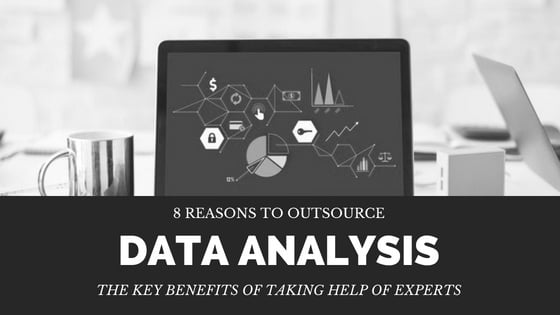3 min read
6 Reasons: Why Choose R Programming for Data Science Projects?
Sales : Sep 18, 2017 12:00:00 AM


R is a language used for statistical computations, data analysis and graphical representation of data. Created in the 1990s by Ross Ihaka and Robert Gentleman, R was designed as a statistical platform for data cleaning, analysis, and representation. Back then R was not a very popular tool but now it has gained tremendous applications and traction. According to 2107 Burtch Works Survey, out of all surveyed data scientist, 40% prefer R, 34% prefer SAS and 26% Python. According to KDNuggets’ 18th annual poll of data science software usage, R is the second most popular language in data science. This shows how popular R programming is in data science. Even Google trends showcase the rapidly rising popularity of R Programming.

If you are deciding on the language to choose for your next data science project you are probably confused between R and Python. Yes, the war since ages in the world of data science! While each of these is equally competent and have their pros and cons, there are some distinct advantages associated with each. Here we are discussing the advantages of R in data science and why it proves to be an ideal choice in this space. Here are 6 reasons of choosing R for your next data science project or to just begin your journey in this field:
Why use R for Data Science?
1. Academia:

R is a very popular language in academia. Many researchers and scholars use R for experimenting with data science. Many popular books and learning resources on data science use R for statistical analysis as well. Since it is a language preferred by academicians, this creates a large pool of people who have a good working knowledge of R programming. Putting it differently, if many people study R programming in their academic years than this will create a large pool of skilled statisticians who can use this knowledge when the move to the industry. Thus, leading increased traction towards this language.
Read More: Suitability of Python for Artificial Intelligence
2. Data wrangling:
Data wrangling is the process of cleaning messy and complex data sets to enable convenient consumption and further analysis. This is a very important and time taking process in data science. R has an extensive library of tools for database manipulation and wrangling. Some of the popular packages for data manipulation in R include:- dplyr Package - Created and maintained by Hadley Wickham, dplyr is best known for its data exploration and transformation capabilities and highly adaptive chaining syntax.
- data.table Package - It allows for faster manipulation of data set with minimum coding. It simplifies data aggregation and drastically reduces the compute time.
- readr Package - ‘readr’ helps in reading various forms of data into R. By not converting characters into factors it performs the task at 10x faster speed.
3. Data visualization:
Data visualization is the visual representation of data in graphical form. This allows analyzing data from angles which are not clear in unorganized or tabulated data. R has many tools that can help in data visualization, analysis, and representation. The R packages ggplot2 and ggedit for have become the standard plotting packages. While the ggplot2 package is focused on visualizing data, ggedit helps users bridge the gap between making a plot and getting all of those pesky plot aesthetics precisely correct.
4. Specificity:
R is a language designed especially for statistical analysis and data reconfiguration. All the R libraries focus on making one thing certain - to make data analysis easier, more approachable and detailed. Any new statistical method is first enabled through R libraries. This makes R a perfect choice for data analysis and projection. Members of the R community are very active and supporting and they have a great knowledge of statistics as well as programming. This all gives R a special edge, making it a perfect choice for data science projects.
5. Machine learning:
At some point in data science, a programmer may need to train the algorithm and bring in automation and learning capabilities to make predictions possible. R provides ample tools to developers to train and evaluate an algorithm and predict future events. Thus, R makes machine learning (a branch of data science) lot more easy and approachable. The list of R packages for machine learning is really extensive. R machine learning packages include MICE (to take care of missing values), rpart & PARTY (for creating data partitions), CARET (for classification and regression training), randomFOREST (for creating decision trees) and much more.
Read More: 5 Machine Learning Trends to Follow
6. Availability:
R programming language is open source. This makes it highly cost effective for a project of any size. Since it is open source, developments in R happen at a rapid scale and the community of developers is huge. All of this, along with a tremendous amount of learning resources makes R programming a perfect choice to begin learning R programming for data science. Because there are many new developers exploring the landscape of R programming it is easier and cost-effective to recruit or outsource to R developers.
Thus, we have seen that R is worth its popularity and it is going to scale further. R allows practicing a wide variety of statistical and graphical techniques like linear and nonlinear modeling, time-series analysis, classification, classical statistical tests, clustering, etc. R is a highly extensible and easy to learn language. All of this makes R an ideal choice for data science, big data analysis, and machine learning.
At NewGenApps we have many expert data scientists who are capable of handling a data science project of any size. In fact, we started working on R and Python way before it became mainstream. Whether it is automating complex tasks or designing algorithms to analyze data we have worked on these technologies and have successfully deployed solutions and generated insights of real business value. If you are looking for developers to manage your big data project then feel free to contact us:

8 Reasons: Why You Should Outsource Data Analysis?
Sometimes organizations struggle to turn even small data into useful information. It becomes a very hectic process for organizations to manage their...

5 Reasons: Why Choose Python for Big Data Projects?
Every professional in the field of big data struggle to choose the right programming language for their project especially when they enter the field....



